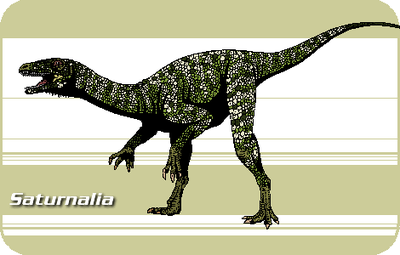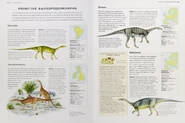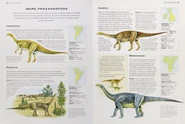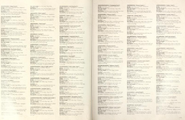
Saturnalia is an extinct genus of basal sauropodomorph dinosaur known from the Triassic of Rio Grande do Sul, southern Brazil about 225 MYA.
Discovery[]
Saturnalia was originally named on the basis of three partial skeletons. The holotype, MCP 3844-PV, a well-preserved semi-articulated postcranial skeleton, was discovered in mid-summer at Sanga da Alemoa, Rio Grande do Sul, in Brazil, in the geopark of Paleorrota. The two paratypes are MCP 3845-PV, partial skeleton including natural cast of partial mandible with teeth and some postcranial remains, and MCP 3846-PV, partial skeleton including postcranial remains. All specimen were collected in the "Wald-Sanga" (also known as "Sanga do Mato") locality from the Alemoa Member of the Santa Maria Formation (Rosário do Sul Group), dating to the Carnian faunal stage of the early Late Triassic, about 225 million years ago. A partial femur from the Carnian Pebbly Arkose Formation of Zimbabwe was also attributed to the genus. It is one of the oldest true dinosaurs yet found. It probably grew to about 1.5 meters (5 ft) long.
Phylogeny[]
The primitive nature of Saturnalia, combined with its mixture of sauropodomorph and theropod characteristics, has made it difficult to classify. Paleontologist Max Cardoso Langer and colleagues, in their 1999 description of the genus, assigned it to the Sauropodomorpha. However, in a 2003 paper, Langer noted that features of its skull and hand were more similar to the sister group of sauropodomorphs, the theropods, and that Saturnalia could at best be considered a member of the sauropodomorph "stem-lineage", rather than a true member of that group. José Bonaparte and colleagues, in a 2007 study, found Saturnalia to be very similar to the primitive saurischian Guaibasaurus. Bonaparte placed the two in the same family, Guaibasauridae. Like Langer, Bonaparte found that these forms may have been primitive sauropodomorphs, or an assemblage of forms close to the common ancestor of the sauropodomorphs and theropods. Overall, Bonaparte found that both Saturnalia and Guaibasaurus were more theropod-like than prosauropod-like. However, all more recent cladistic analyses found it to be a very basal sauropodomorph, possibly guaibasaurid, as the family was found to nest in a basal position within Sauropodomorpha.





